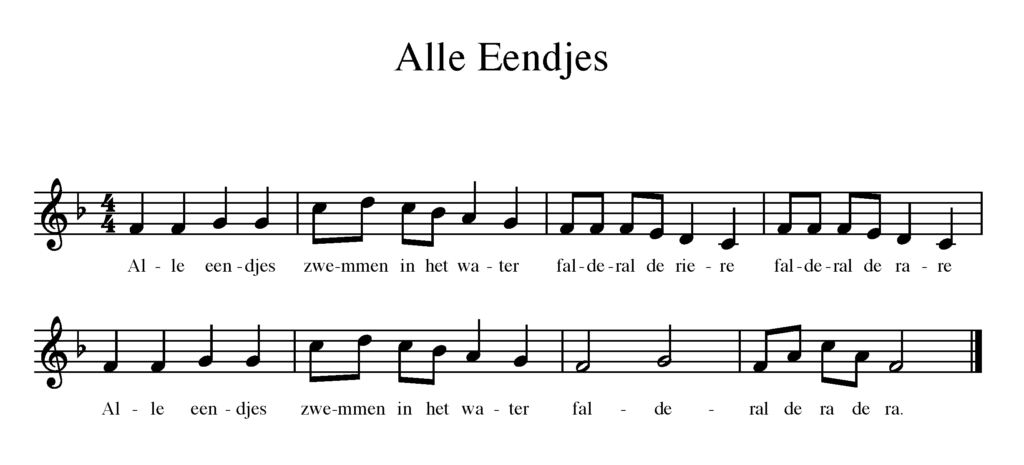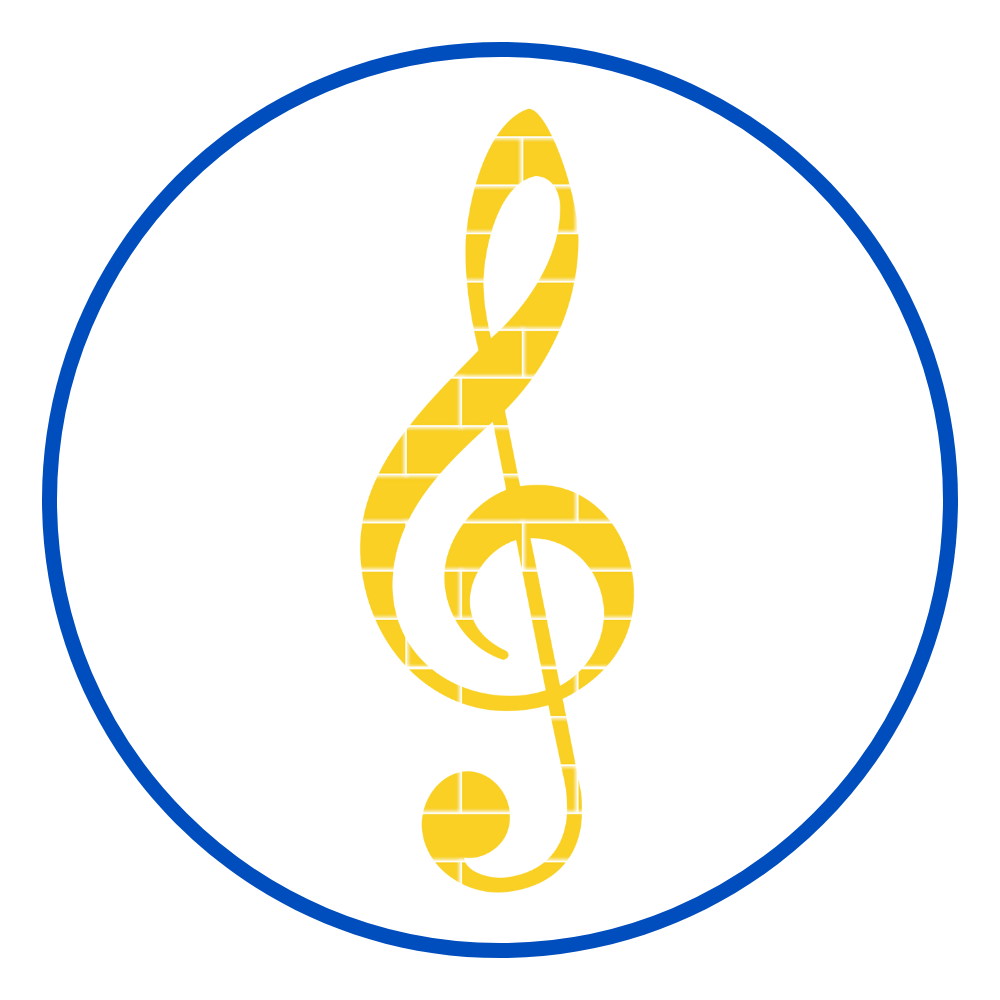There’s a good chance I’ll be traveling to the Netherlands this year. More accurately, my husband is bringing me along with him on his work trip. And that got me thinking; I know exactly zero children’s songs from the Netherlands.
I started digging on Mama Lisa’s Website, and found Alle Eenjdges, which translates to All the Ducklings. And like many folk songs, it has multiple versions, having been sung by children in Germany, Belgium, Romania, and Brazil.

I chose this particular song for three reasons. First, the melody is catchy. Second, it consists of two similar phrases, making it quick and easy to learn. And third, it’s about ducklings, which means that it has the potential to be incorporated into a spring-themed performance.
RHYTHMS & CREATIONS
This song consists of half, quarter, and barred eighth notes, making it perfect for an easy rhythm practice. One way to make rhythms easily accessible to all students, is by using body percussion. Body percussion requires no special tools and can easily be modified for each student.
Begin by modeling the song (sing it for your students) several times through. This will take some serious preparation, as you’ll want to listen recordings and practice singing and speaking the words in rhythm until you can do so easily by memory. Again, this is why I chose a shorter song with repeated phrases.
Then, watch a video of the song (such as the one I shared above) and ask students what they think the song is about. Discuss the English translation. Finally, ask students what folk songs they know that are similar to Alle Eendjes, such as other folk songs that feature birds. I think it’s important to highlight this commonality. No matter where we’re born, we’re inspired to sing songs about nature.
Once students have mastered singing the phrases, you can begin adding in body percussion. Any movement will do, but here’s an example to get started:
- Half notes = stomp
- Quarter notes = pat
- Eighth notes = clap
Next, have them break into groups and create their own body percussion to replace one of the rhythms. For example, perhaps they’ll choose to replace clapping eighth notes with snapping them. Once they’ve created and practiced their body percussion, have them share it with another group or with the whole class.
ACTION GAMES & CREATIONS
I don’t know of any game that’s traditionally played with this song. However, it doesn’t hurt to add one! This song could easily be paired with an action game, such as: Duck-Duck-Goose style game.
- Duck-Duck-Goose
- Students sit in the circle with one students walking around the outside. At the end of the song, the student taps someone on the head. They both race around the circle to see who can capture the newly vacant spot first.
- Passing Game
- Students sit in a circle and pass one or more rubber ducks around the circle to the beat.
- Teacher sits with students in the circle. They begin a pattern of passing on the beat like so: pick up from left, put down on right, pick up from left, etc. Students continue this passing motion whether they have an object in their hands or not. The teacher starts by passing a small rubber duck (or other object). Then, the teacher continues to pass out more objects randomly until the number of objects equals the number of students.
Along the same lines, you could have students create their own hand clapping game to go with the song. It’s always a good idea, however, to set parameters. For example, they game must have one motion/action per beat, and their actions have to include their partners at least once during each phrase of the song.
